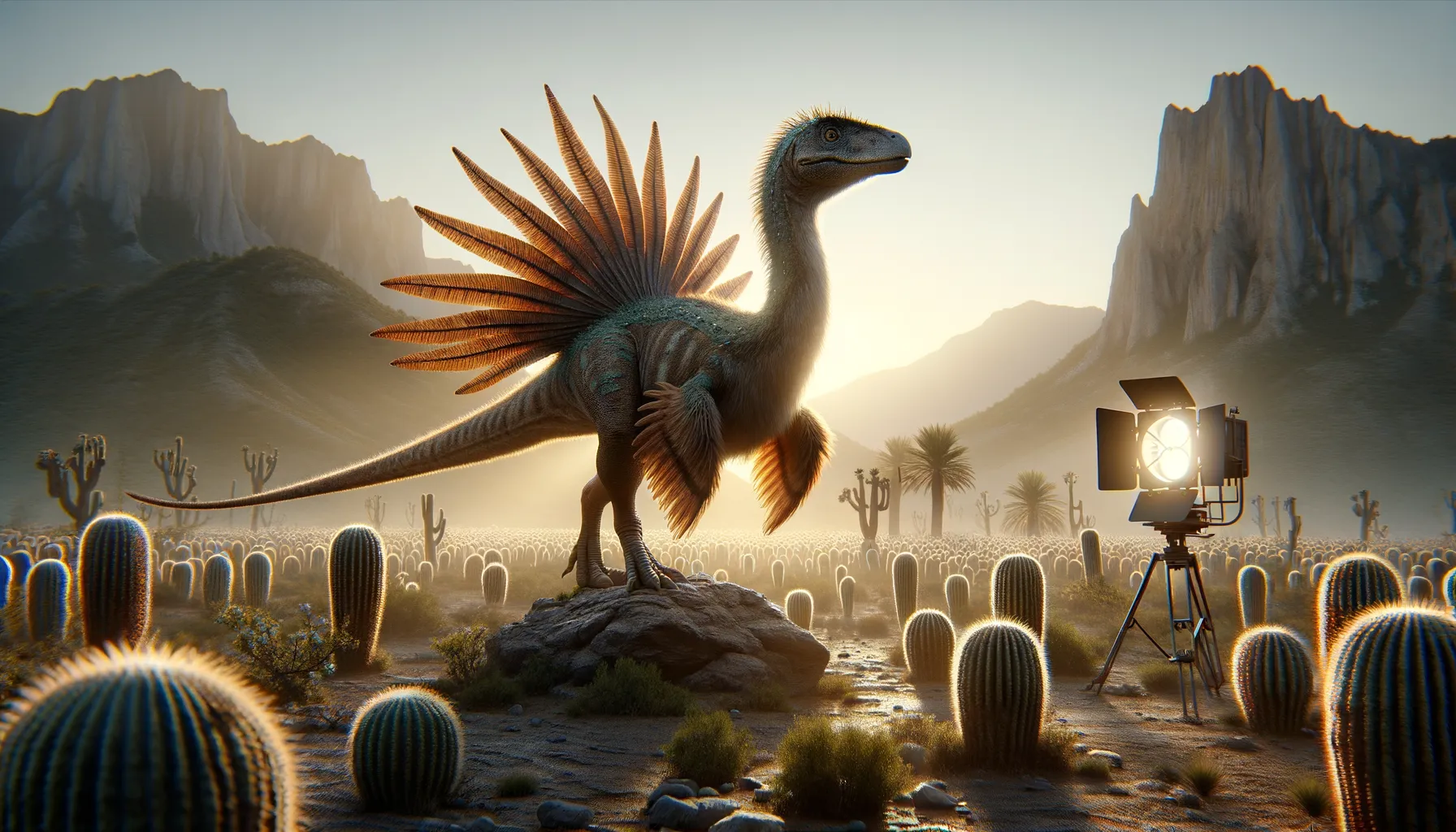
Shenzhousaurus
Bird-like dinosaur with fascinating adaptations.
Period
Cretaceous
Length
About 1.6 meters (5.2 feet) long.
Height
Around 0.9 meters (3 feet) tall.
Weight
Approximately 20-25 kg (44-55 lbs).
Shenzhousaurus was a small ornithomimosaurian dinosaur known for its bird-like qualities. Living during the Early Cretaceous period, it roamed the ancient lands that are now China. It represents an important evolutionary link between more primitive theropods and the later ostrich-like dinosaurs. Its fossils provide crucial insights into the diversity and adaptability of small dinosaurs during this era.
Diet
Shenzhousaurus likely had an omnivorous diet, feeding on a combination of plants, small animals, and insects. Its beak-like mouth suggests it could process a variety of foods efficiently.
Hunting
As a likely omnivore, Shenzhousaurus probably foraged for food rather than actively hunting. It might have used its speed and agility to capture small prey when opportunities arose.
Environmental challenges
Shenzhousaurus lived in a volatile environment with varying climates and possible seasonal changes. It had to adapt to different food sources and compete with other creatures for resources. The shifting landscapes caused by tectonic movements also posed significant challenges.
Speed
Moderate runner, likely moved quickly on two legs.
Lifespan
Estimated to live for about 10-20 years.
First discovery
Discovered in Liaoning Province, China in 2003.
Fun Facts
- Shenzhousaurus was discovered in Liaoning Province, China and its name means 'Shenzhou lizard,' referencing an ancient name for China.
- It lived during the Early Cretaceous period, around 125 million years ago.
- Shenzhousaurus is a type of dinosaur known as an ornithomimosaur, which are often compared to ostriches due to their body shape and presumed speed.
- Unlike its later relatives, Shenzhousaurus had teeth, suggesting it had a different diet that might have included plants, small animals, or insects.
- The discovery of Shenzhousaurus helped scientists understand more about the evolution of feathered dinosaurs and their transition towards birds.
- Fossils of Shenzhousaurus show evidence of feather-like structures, adding to the theory that many dinosaurs had some form of feathers or similar coverings.
- Shenzhousaurus is considered a relatively small dinosaur, with estimates suggesting it was about the size of a large dog.
Growth and Development
Shenzhousaurus likely experienced rapid growth in its early years to quickly reach a size that could evade predators. Its development would have included maturing from a vulnerable hatchling to a more independent juvenile in a short span.
Habitat
Shenzhousaurus inhabited regions characterized by lush vegetation and a variety of small wildlife. These areas provided ample food sources and cover from larger predators. The environment was likely a mix of open plains and forested areas, ideal for an agile creature.
Interaction with other species
Shenzhousaurus coexisted with other small dinosaurs and various mammalian species. It likely engaged in competition for food but also benefited from the ecological niches created by larger species. Its interactions might have included evading predators and competing with other herbivores.
Natural lifespan
The natural lifespan of Shenzhousaurus could have been around 10-20 years.
Reproduction
Reproductive strategies likely involved laying eggs in nests. Shenzhousaurus might have exhibited some form of parental care, similar to modern birds, ensuring the survival of its offspring.
Social behaviour
Shenzhousaurus may have lived in small groups for protection and efficient foraging. Social structures might have been loose, with individuals coming together during breeding seasons or when young needed protection.
Fossil locations
Fossils of Shenzhousaurus have been primarily unearthed in Liaoning Province, China. These sites are famous for their well-preserved and detailed fossils, providing crucial insights into Early Cretaceous ecosystems.
